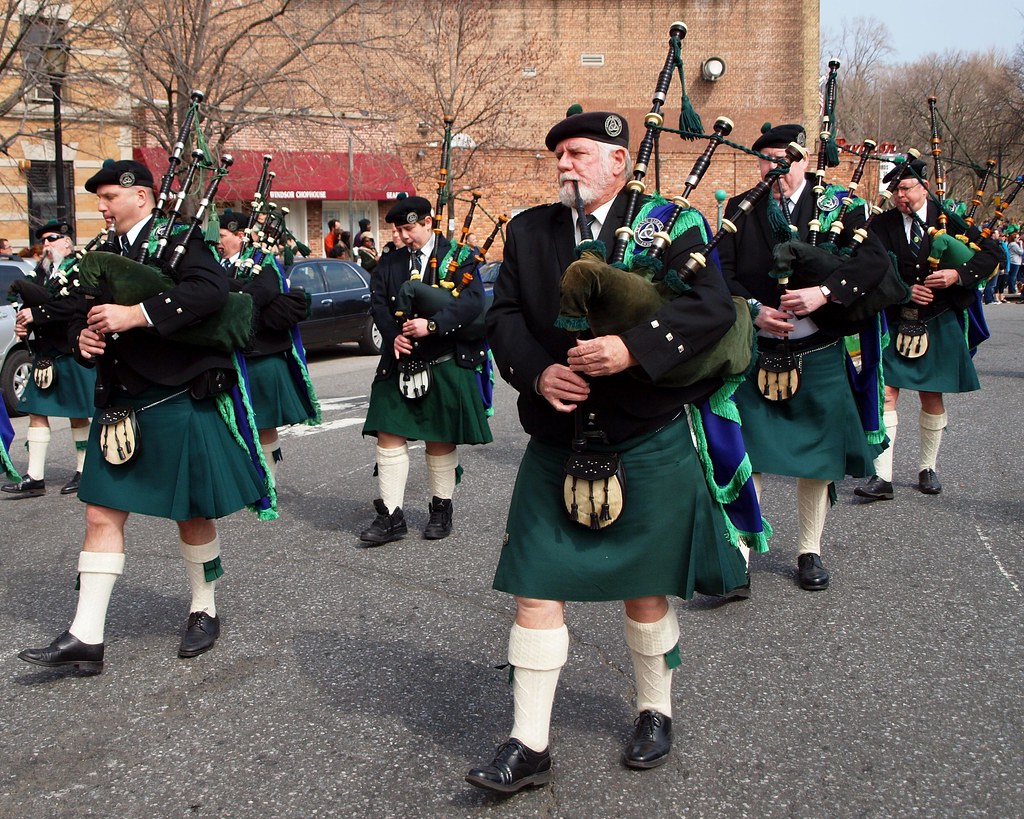
The drones, different from the Irish bagpipes, also have reeds in them, but they have no holes, and you can’t control them in any way.

The chanter has holes in it and is played like a flute, with a player fingering to get the right notes. Scottish bagpipes have only one chanter and three drones. Still, these days there are many more synthetic materials to reduce the cost and make it easier to manufacture. The bag on both instruments is usually made out of animal skin. The bag is filled with air by the blowpipe and has to be constantly refilled as you play, making it a reservoir of air for the instrument. The traditional Scottish bagpipe consists of the blowpipe, the bag, the chanter, and the drones. As we’ve already mentioned, the main difference is the way you play them-the piper has to blow into the bagpipe. They are big, loud, and have a limited scale to play on. The Scottish bagpipe is the original instrument, and the one most people think of when they think of bagpipes. Also, you should note that Irish bagpipes tend to be much more expensive and require more time to be constructed because of these differences. This means that you can play chords and more elaborate melodies on Irish bagpipes than you can on the Scottish ones.

They come in a set of three and look a lot like chanters, with holes and reeds, and they sit on the player’s lap next to chanters. Regulators are the unique feature of the Irish bagpipes. The main difference, though, is the regulators. Pipe chanters can also be shut down, as well as drones, so you can have much more control over the sounds that you play.

The range of the chanters is wider-they can fit two octaves instead of one. This, together with the bellow part, means that this bagpipe is intended to be played while sitting and not standing or marching, as is the case with the Scottish bagpipes. They are meant to be sitting on the player’s lap. The chanters of the Uilleann Pipe are double reed. The bellow is held beneath the player’s dominant arm and pushed with an elbow to get the air flowing. Because of this, they are a bit more complex in their build and have several key differences.Īs we’ve already mentioned, the wind for the bagpipes comes from the bellow and not from the player’s mouth. Irish bagpipes are a bit younger than their Scottish counterparts. This gives the Irish bagpipes a much softer and quieter sound. Irish bagpipes have an internal bore shape that is cylindrical. Because of the way their chanter is built from the inside, they have a more intense and percussive sound. They are usually played with the player sitting, as they need to get a better hold of the instrument to be able to control the bellow.īecause of the more octaves that can be played on the instrument, Irish bagpipes play a larger variety of chords and more elaborate melodies than their Scottish counterpart. Irish bagpipes, on the other hand, are inflated by the bellow, which is then contracted by the hand of the player to create the wind needed for the instrument to work. This instrument is mostly played standing or marching in a marching band. This means that you have to have strong lungs to be able to play the instrument constantly. Scottish bagpipes can be hard on the lungs of the player. The main difference between the two is the way the players get the wind to the instrument to get the sound from it. Differences in Playing Styleīoth of the instruments are played in the same way. Because of the different way you blow the air into the reeds from these instruments, Scottish bagpipes have a much louder and more percussive sound, while Irish bagpipes produce a much softer and warmer sound. There is also a big difference in the sound of these instruments. Irish bagpipes, on the other hand, have multiple scales and usually two octaves.

Scottish bagpipes have only one scale-the Mixolydian scale, as well as only one octave as a result of that. This comes from the slight differences in the design of the instrument itself.


 0 kommentar(er)
0 kommentar(er)
